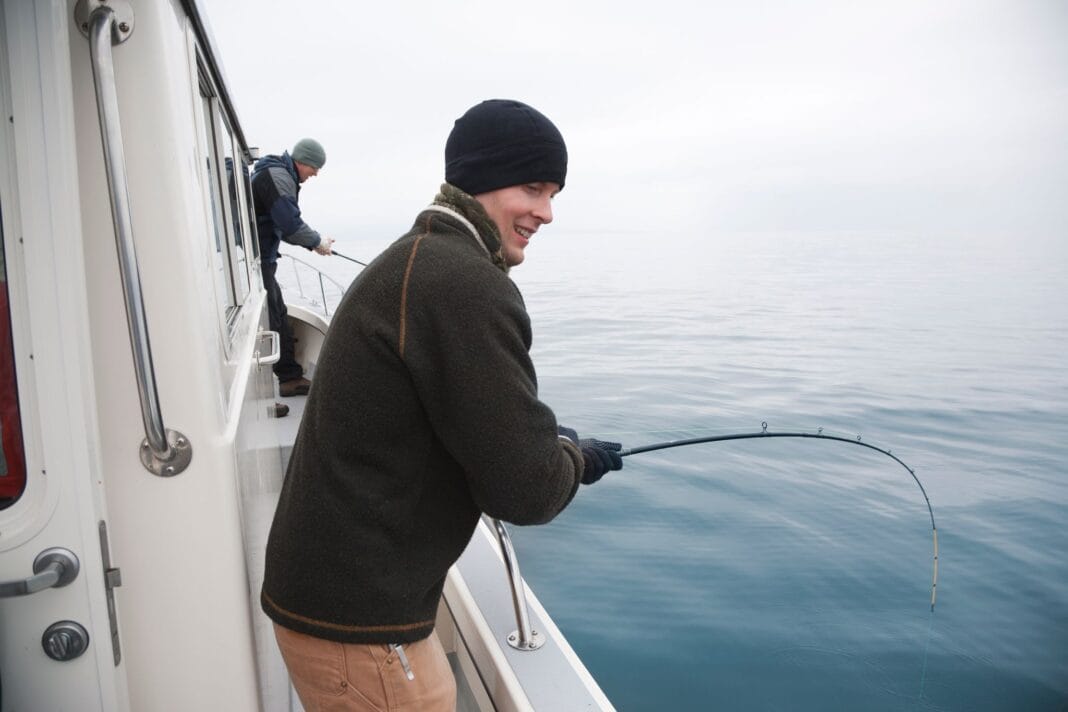Deep-sea fishing is an exhilarating adventure that takes anglers beyond the calm coastal waters and into the vast open ocean. It’s a sport that challenges even seasoned fishers, but it’s also accessible to beginners who are eager to experience the thrill of reeling in a big catch. This ultimate guide will help beginners navigate the exciting world of deep-sea fishing, covering everything from essential gear to fishing techniques.
Understanding Deep-Sea Fishing
What is Deep-Sea Fishing?
Deep-sea fishing, also known as offshore fishing, involves venturing far from shore, into waters several hundred feet deep. This can mean fishing in depths where you can find famous species like marlin, tuna, and swordfish. It’s an opportunity to experience a completely different ecosystem compared to freshwater and coastal fishing.
Why Choose Deep-Sea Fishing?
Deep-sea fishing offers excitement and the possibility of catching large, trophy-sized fish. It provides an opportunity to learn about marine environments, understand oceanography, and enjoy nature in its rawest form. The thrill of battling a big fish in deep water is a unique experience that many describe as unmatched.
Preparing for Your First Trip
Selecting the Right Charter
For beginners, joining a chartered fishing boat is the best way to start. Charters provide guided trips with experienced crews who know the best fishing spots and will help you understand the basics. When choosing a charter, consider the following:
- Reputation: Look for reviews and ask for recommendations.
- Safety: Ensure the charter complies with all safety regulations.
- Packages: Some charters offer half-day, full-day, or overnight trips. Consider your experience level and endurance.
Essential Gear and Equipment
While charters often provide equipment, it’s good to understand what’s needed.
- Rod and Reel: Choose a sturdy rod and reel capable of handling large fish and deep waters.
- Line: Braided lines are preferred for their strength and sensitivity.
- Bait and Lures: These can vary depending on target species but may include live bait, artificial lures, and jigs.
- Safety Gear: Include a personal flotation device, sunscreen, and a first-aid kit.
- Clothing: Dress in layers for changing weather and bring non-slip shoes.
Understanding the Basics
Key Terms and Concepts
- Tackle: Refers to the gear used in fishing, including hooks, lines, and rods.
- Drift Fishing: Letting the boat drift with the currents and using bait to attract fish.
- Bottom Fishing: Dropping bait to the ocean floor to catch bottom dwellers like snapper and grouper.
Learning to Navigate the Waters
Understanding the ocean’s currents, tides, and weather patterns is crucial. A skipper will guide you, but knowing the basics ensures safety and increases your chances of catching fish.
Techniques for Deep-Sea Fishing
Preparing Your Line
Ensure your line is properly rigged. Learn to tie strong knots like the Palomar or Improved Clinch Knot for better reliability.
How to Get Fish to Bite
Attracting fish requires the right setup and techniques:
- Use the Right Bait: Match the bait to the target species. Live bait like squid or mackerel is ideal for predatory fish, while artificial lures mimic the movement of prey.
- Choose Your Technique:
- Trolling: Drag lures or bait behind a moving boat to cover more ground.
- Bottom Fishing: Drop bait to the seafloor for species like grouper and snapper.
- Chumming: Toss small bits of bait into the water to attract fish.
- Time It Right: Fish are more active during certain times of the day. Early mornings and late afternoons are typically prime.
What to Do When the Fish Bites
Once a fish takes the bait, timing and composure are critical:
- Set the Hook: When you feel a strong tug, quickly and firmly pull the rod upward to drive the hook into the fish’s mouth.
- Stay Calm: Allow the fish to make its initial run. Many deep-sea fish are powerful and will try to escape.
- Keep Tension on the Line: Maintain steady pressure to prevent the fish from shaking the hook loose.
- Use Proper Techniques: Alternate between allowing the line to run and reeling the fish in.
- Stay Balanced: Maintain your footing and use your body weight to control the rod.
How to Reel Your Fish Up
Reeling in a deep-sea fish requires endurance and proper technique:
- Use a Pump-and-Reel Method:
- Lift the rod slowly to bring the fish closer.
- Lower the rod while reeling in slack.
- Maintain Control: Adjust the drag on your reel to avoid breaking the line. Let the fish tire itself out during longer battles.
- Stay Balanced: Plant your feet firmly and use your body weight for leverage to avoid being pulled off balance by a strong fish.
Catch and Release Practices
If you opt to release your catch:
- Minimize Handling: Use wet hands or gloves.
- Revive the Fish: Hold the fish upright in the water to allow it to recover before release.
Staying Safe at Sea
Weather Awareness
Always check forecasts before heading out and remain vigilant for sudden changes in weather.
Seasickness Prevention
Take preventative measures like seasickness tablets or natural remedies to ensure comfort on your trip.
Emergency Preparedness
Know basic boat safety, listen to your guide, and understand the emergency procedures outlined by the crew.
Deep-sea fishing is an unparalleled experience that offers adventure, learning, and tranquility. By choosing the right charter, equipping yourself with necessary gear, and understanding basic techniques, even beginners can have a successful and enjoyable trip. Remember, every fishing trip is a learning experience, so embrace the thrill of the ocean and the beauty of the deep sea. Happy fishing!



